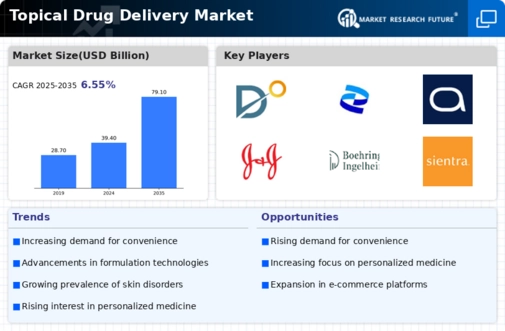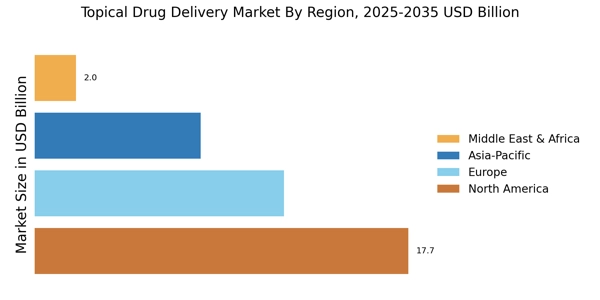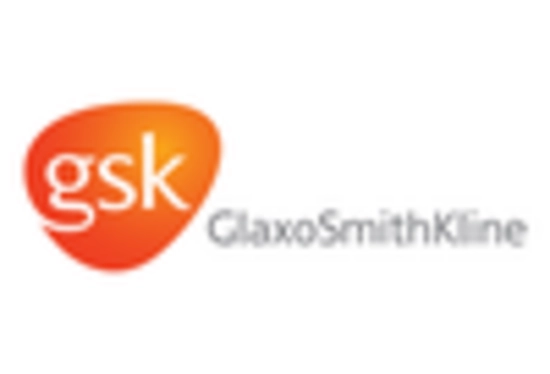Increasing Prevalence of Skin Disorders
The rising incidence of skin disorders such as psoriasis, eczema, and acne is a primary driver for the Topical Drug Delivery Market. According to recent estimates, skin diseases affect a significant portion of the population, leading to a growing demand for effective topical treatments. This trend is likely to propel the market forward, as patients seek targeted therapies that can be administered directly to affected areas. The increasing awareness of skin health and the availability of innovative formulations are expected to further enhance market growth. As a result, pharmaceutical companies are investing in research and development to create advanced topical drug delivery systems that cater to the specific needs of patients suffering from these conditions.
Advancements in Drug Formulation Technologies
Technological advancements in drug formulation are transforming the Topical Drug Delivery Market. Innovations such as nanotechnology, microemulsions, and liposomes are enabling the development of more effective and efficient topical formulations. These technologies enhance drug penetration and bioavailability, which are critical factors in the efficacy of topical treatments. The market is witnessing a shift towards more sophisticated delivery systems that can provide sustained release and targeted action. As a result, pharmaceutical companies are increasingly focusing on R&D to leverage these advancements, which could lead to a broader range of therapeutic options for patients. This trend is likely to stimulate market growth as healthcare providers seek to offer improved treatment solutions.
Rising Awareness of Skin Health and Aesthetics
The growing awareness of skin health and aesthetics is driving demand in the Topical Drug Delivery Market. Consumers are increasingly prioritizing skincare and are willing to invest in products that promise visible results. This trend is evident in the rising sales of topical products aimed at improving skin appearance and treating various skin conditions. The market is experiencing a surge in demand for anti-aging creams, moisturizers, and other cosmetic formulations that utilize advanced drug delivery technologies. As consumers become more informed about the benefits of topical treatments, the market is likely to expand, with companies focusing on developing products that cater to this growing consumer base.
Growing Demand for Non-Invasive Treatment Options
The increasing preference for non-invasive treatment options is significantly influencing the Topical Drug Delivery Market. Patients are increasingly opting for topical therapies over invasive procedures due to their ease of use and lower risk of complications. This shift in patient preference is driving pharmaceutical companies to develop more topical formulations that are both effective and user-friendly. The market is expected to expand as healthcare providers recognize the benefits of non-invasive treatments, which can lead to better patient compliance and satisfaction. Furthermore, the rise in self-medication trends is likely to contribute to the growth of the market, as patients seek convenient solutions for managing their health conditions.
Regulatory Support for Innovative Drug Delivery Systems
Regulatory bodies are increasingly supporting the development of innovative drug delivery systems, which is a key driver for the Topical Drug Delivery Market. Initiatives aimed at expediting the approval process for novel formulations are encouraging pharmaceutical companies to invest in R&D. This regulatory support is crucial for bringing new and effective topical therapies to market, thereby enhancing treatment options for patients. The emphasis on patient safety and efficacy in drug delivery systems is likely to foster innovation and competition within the industry. As a result, the market is expected to witness a surge in new product launches, which could significantly impact overall growth and accessibility of topical treatments.


















Leave a Comment